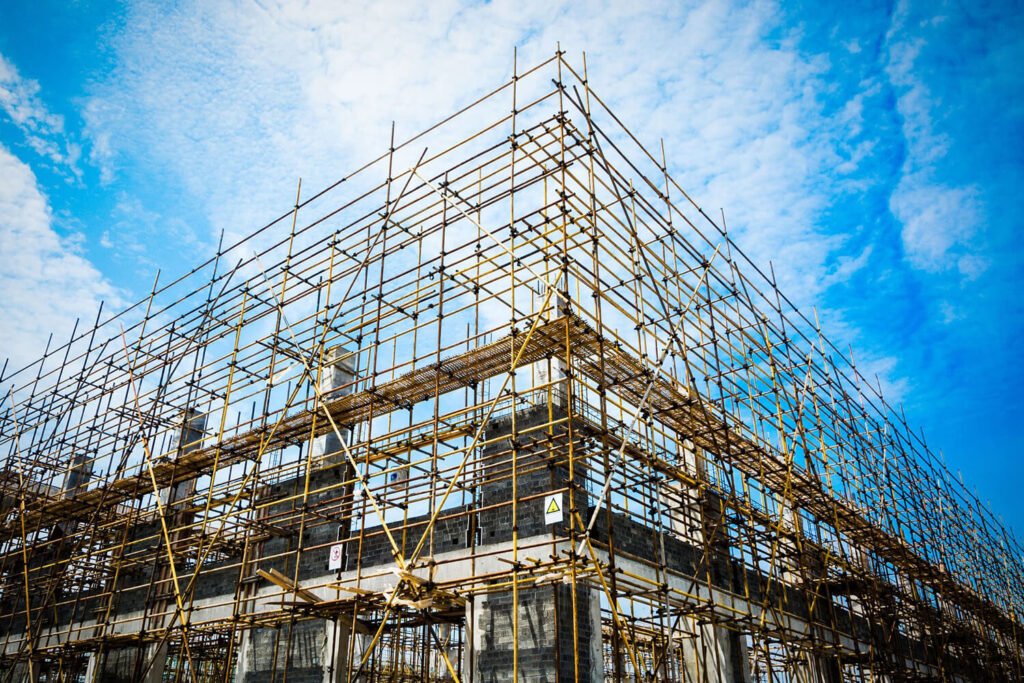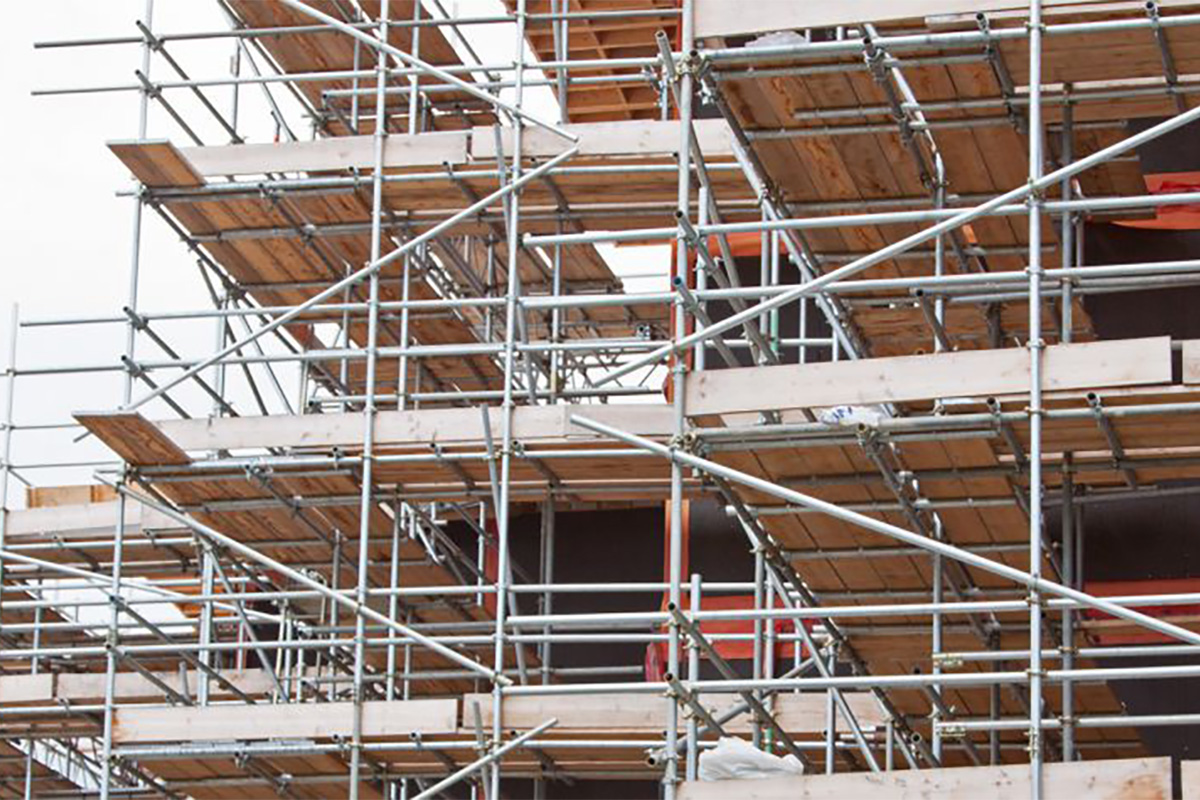Expert Scaffolder Surrey Offering Customized Solutions for Your Needs
Expert Scaffolder Surrey Offering Customized Solutions for Your Needs
Blog Article
Exploring the Numerous Kinds Of Scaffolding Used in Building Tasks
The building and construction sector depends greatly on different kinds of scaffolding to meet details job needs, each offering unique benefits and applications. Conventional framework scaffolding offers a strong structure for basic jobs, while suspended scaffolding is essential for work with skyscraper frameworks. Various other options, such as system and rolling scaffolding, accommodate effectiveness and movement, specifically. The cantilever variant verifies indispensable in metropolitan atmospheres where room is constricted. Comprehending the subtleties of these scaffolding kinds is crucial for enhancing safety and performance on construction websites, motivating a better examination of their one-of-a-kind features and applications.

Standard Structure Scaffolding
Conventional framework scaffolding is among the most widely utilized methods in the building market because of its toughness and flexibility. This system includes straight and vertical frameworks that are set up to create a steady platform for employees and products. The major components consist of vertical posts, horizontal ledgers, and diagonal dental braces, which together give a solid framework that can support considerable loads.
One of the key benefits of standard structure scaffolding is its versatility to different building tasks, ranging from property buildings to big industrial structures. The modular design enables simple assembly and disassembly, making it reliable for both temporary and long-lasting tasks. Furthermore, the system can be personalized in height and width, fitting various building designs and site problems.
Safety is extremely important in scaffolding applications, and traditional framework systems are outfitted with guardrails and toe boards to stop drops and make sure worker defense. Moreover, normal examinations and adherence to security policies are essential in preserving the stability of the scaffold. Overall, conventional frame scaffolding remains an essential choice in the construction market, providing a dependable platform for labor and boosting general job performance

Suspended Scaffolding
Suspended scaffolding supplies a distinct option for building jobs that require access to elevated surface areas, specifically in scenarios where conventional structure scaffolding might be impractical. This type of scaffolding is commonly suspended from the roofing system or top degrees of a framework, making use of a system of sheaves, systems, and ropes to create a working area that can be adapted to numerous elevations.
One of the primary benefits of put on hold scaffolding is its flexibility. It can be conveniently repositioned or reduced to accommodate modifications in building requirements, making it ideal for jobs such as window setup, façade job, and maintenance on high-rise structures. In addition, the very little impact of suspended scaffolding allows for far better use of ground room in urban settings, where area is commonly restricted.
Safety is a critical consideration in the usage of suspended scaffolding. Generally, suspended scaffolding provides a effective and effective service for accessing hard-to-reach locations in numerous construction situations, boosting both productivity and security on site.
System Scaffolding
System scaffolding, often considered a modern-day solution about his in the scaffolding market, consists of pre-engineered elements that can be swiftly set up and adjusted for numerous construction jobs. Scaffolding. This type of scaffolding is characterized by its modular style, which enables for convenience and performance on work sites, accommodating structural needs and different elevations
Generally made from high-strength steel or aluminum, system scaffolding supplies improved resilience and stability. The components consist of upright messages, horizontal ledgers, and diagonal braces, which interconnect firmly, making sure a robust structure. The layout frequently integrates standard installations, streamlining assembly and disassembly procedures, thus lowering labor time and expenses.

Rolling Scaffolding
Moving scaffolding is a flexible choice to conventional fixed scaffolding, made for mobility and convenience of you could check here usage on building and construction websites. This sort of scaffolding includes a system supported by structures with wheels, permitting employees to easily move it as required. The movement feature significantly enhances efficiency, as it decreases downtime connected with constructing and disassembling taken care of scaffolding.
Usually built from light-weight products such as aluminum or steel, rolling scaffolding offers a sturdy yet mobile remedy for projects calling for constant repositioning - Scaffolding. It is particularly advantageous in jobs such as painting, drywall installation, and electric work, where accessibility to numerous elevations and areas is needed
Security is extremely important in rolling scaffolding layout, with features such as securing wheels to stop unplanned motion when in operation, and guardrails to shield workers from drops. In addition, lots of versions are flexible in height, suiting numerous project requirements.
Cantilever Scaffolding

The style of cantilever scaffolding generally involves making use of arms or braces secured to a structure or structure, making it possible for the platform to expand external safely. Security is critical; hence, these scaffolds must be crafted to endure environmental conditions and numerous lots. Routine examination and upkeep are necessary to make sure architectural honesty and worker safety.
Cantilever scaffolding is preferred for its flexibility and reliable usage of room, making it a preferred option in urban environments where room restrictions prevail. In addition, it promotes simpler access to high elevations, inevitably adding to the total effectiveness of building and construction jobs. Similar to all scaffolding kinds, appropriate training and adherence to safety criteria are essential for workers making use of cantilever scaffolding.
Verdict
Finally, the diverse kinds of scaffolding used in building projects each offer distinctive purposes tailored to certain website requirements. Traditional structure scaffolding provides security, while suspended scaffolding provides versatility for raised jobs. System scaffolding promotes fast setting up, and rolling scaffolding boosts mobility for differing workplace. Cantilever scaffolding properly addresses challenges in urban settings. Understanding these scaffolding kinds is necessary for maximizing security and performance in construction, inevitably adding to the effective completion of projects.
Traditional frame scaffolding gives a strong foundation for general jobs, while put on hold scaffolding is crucial for job on high-rise frameworks.Rolling scaffolding is a flexible option to conventional fixed scaffolding, developed for movement and simplicity of use on construction sites. As with all scaffolding kinds, appropriate training and adherence to safety and security requirements are crucial for workers making use of cantilever scaffolding.
Traditional structure scaffolding provides security, while put on hold scaffolding uses adaptability for elevated jobs. System scaffolding promotes fast setting up, and rolling scaffolding enhances movement for varying work settings.
Report this page